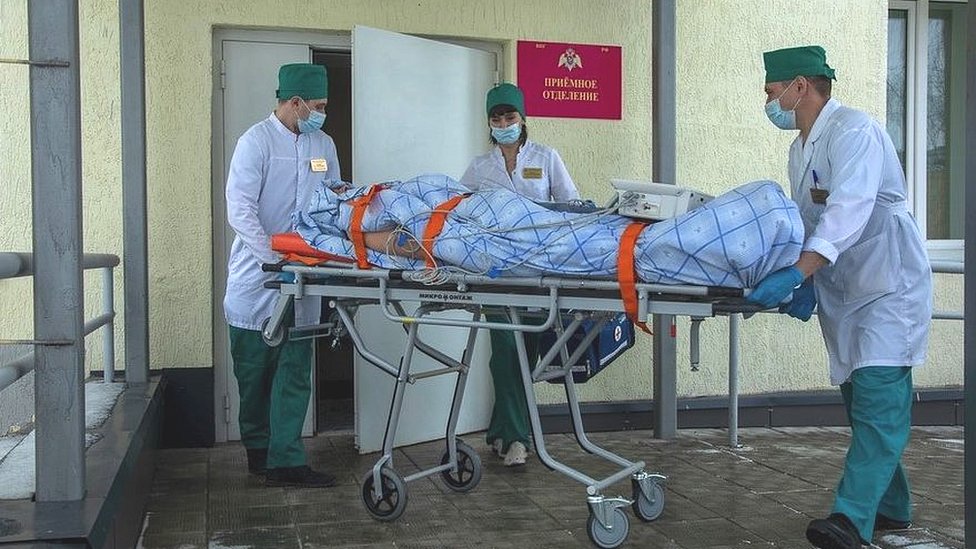1/ A top-level scam at the Russian Ministry of Defence, in which decrepit old ships were used for one-way trips to transport weapons and equipment to Syria as part of the 'Syria Express', may have reduced Russia's ability to evacuate its equipment following Assad's fall. ⬇️ 

2/ The VChK-OGPU Telegram channel reports that top Russian defence officials purchased old cargo ships destined for scrapping, for the price of new ships, redesignated them as military transports, and used them to transport arms to Syria before selling them to Turkish scrappers.
3/ The scam was reportedly the work of former Defence Minister Sergei Shoigu (l) and his deputies Timur Ivanov (c) and Dmitry Bulgakov (r). All three have since been sacked, and Ivanov and Bulgakov have been charged with large-scale corruption. 





4/ According to VChK-OGPU, the three used a shell company to purchase the ships, with the excess cost likely ending up in their own pockets. The ships made only a few trips to Tartus before being sold for scrap. They were reportedly in a decrepit and unseaworthy condition.
5/ Several old ships were purchased. They included the Vologda-50 (pictured here, formerly the civilian ship Dadali); Kyzyl-60 (formerly Smyrna); Dvinitsa-50 (formerly the Turkish cargo ship Alican Deval); and Kazan-60 (formerly the Ukranian ship Georgy Agafonov). 

6/ The Kazan-60 had been sold for $300,000 in 2014 to a Turkish scrapyard to be scrapped, after sitting idle and rusting for many years. In 2015, the ship was resold to an offshore shell company controlled by Shoigu, and was incorporated into the Black Sea Fleet as a transport. 

7/ The Russian MOD also hired the ferry Alexander Tkachenko from the Sovfracht company, owned by Dmitry Purim – an old friend of Dmitry Bulgakov. According to VChK-OGPU, it paid an exorbitant rate "and the difference went to the Shoigu team, through Bulgakov and Ivanov." 

8/ VChK-OGPU reports: "During the acceptance of the "Dvinitsa-50", it was stated that its full service life expired in June 2015. The vessel had no records of recent repairs and maintenance, no forms for the main engine and auxiliary machinery, no spare parts kit. 

9/ "The operating instructions for the main equipment and machinery needed to be translated into Russian.
10/ "The navigation aids were in a deplorable state, the direction-finding repeaters were present, but had not been used for their intended purpose for so long that they were covered in rust.
11/ "There was no electronic navigation and information system and log, and the only operating documentation was the echo sounder instruction (in English)."
A Russian Navy mechanic reported that only two of the ship's three diesel generators were in working order.
A Russian Navy mechanic reported that only two of the ship's three diesel generators were in working order.
12/ One generator was tripped within an hour by a blowout protection and low crankcase oil level, while the other had problems with 'generator excitation'.
The ship was only accepted for service due to an overriding order by the Defence Ministry leadership.
The ship was only accepted for service due to an overriding order by the Defence Ministry leadership.
13/ According to VChK-OGPU, Russian Navy crews from the 205th detachment of auxiliary vessels of the Black Sea Fleet were so appalled by what they found on the Dvinitsa-50 that they tried to withdraw from service on the 'Syria Express'.
14/ With the 'rustbucket fleet' now scrapped, the cargo ship Ursa Major sunk near Algeria, and Russia's Ropucha-class landing ships now trapped in the Black Sea or sunk by Ukrainian attacks, Russia's ability to evacuate its equipment from Syria has significantly decreased. /end
Source:
t.me/vchkogpu/53555
t.me/vchkogpu/53555
• • •
Missing some Tweet in this thread? You can try to
force a refresh










